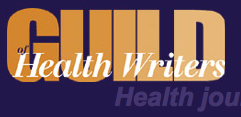Communications recruitment: content marketing for health journalists
 An interesting evening at the Medical Society of London, where the Guild of Health Writers was holding an event on how to ‘Broaden Your Horizons’ as a journalist in the sector. What was compelling, for me, was that the challenges faced by journalists in this most specialist of areas are reflected right across the media world: a decline in print journalism, the rise of content marketing, and the need to adapt to the changing world.
An interesting evening at the Medical Society of London, where the Guild of Health Writers was holding an event on how to ‘Broaden Your Horizons’ as a journalist in the sector. What was compelling, for me, was that the challenges faced by journalists in this most specialist of areas are reflected right across the media world: a decline in print journalism, the rise of content marketing, and the need to adapt to the changing world.
Three of the panellists are living proof of how you can change mid-career: Simon Warne, now the Media & Marketing Director of Creston Health; John Isitt, the founder of Resonant Media; and Maureen Rice, Editorial Director of Cedar Communications.
Simon made the switch to PR in 2000, having been made redundant after 13 years as a writer and editor in the health market. As he pointed out, the skills required in both roles are much the same: chief amongst them, the ability to convey complex content in an engaging package. Now a key part of a growing communications business, he is following a track he would not have predicted when he became a journalist 27 years ago.
John has a similar story. Resonant draws on his experience as a health writer to create educational content for patients and social services in order that the treatment and prevention of illness can be more effective. He identified a need in the market and has effectively created a highly successful, and still growing, business using his transferable skills as a journalist.
The former editor of Psychologies, Maureen has moved away from the newsstand to full-on content marketing. Before her presentation, she was asked if she missed the ‘cut and thrust’ of the newsstand. She does not. Content marketing – and particularly so for the multi-platform content agencies that she represents – is where the finances and commitment are, she contends. One of the chief challenges facing consumer digital media is the business model: whether it is paid for through subscription, advertising, or sponsorship – or is free-to-view and loss-making. “We have solved the problem of who pays for content,” she says. “It is the brand.”
Other takes on mid-career conversion and communications recruitment were told by Liz Hollis, a passionate ‘content consultant’ who recognised her own transferable skills after taking advice from Bridget McIntyre’s ‘Dream On’ consultancy; by Lucy Jolin, an inspirational speaker, who talked of her own journey from luddite to self-marketed digital expert who works with media and commercial clients; and by Helen Foster, who wrote and promoted her own ebook, despite being technically “unable to connect my pedometer to my iPhone.”
The common theme was that the same traditional journalistic values of providing valuable, actionable content still prevail; but that the platform on which they will be practised are changing constantly. Every brand is a media owner, and the need for ‘trusted voices’ is greater now than ever: but the users of that content are also more demanding than ever. Journalists need to learn to use multimedia, including shooting and editing video, and social media, and they need to get to grips with the demands of SEO at the very least if they are to compete.
It was fitting that the evening was chaired by Barbara Rowlands, who runs the MA course in Magazine Journalism at City University. Many of her graduates will not end up in traditional journalistic careers – and certainly not in magazines. But the evening helped to confirm that, while traditional media offers fewer opportunities these days, the skills they will learn in such courses will be crucial and applicable over the coming years across an increasing range of platforms.